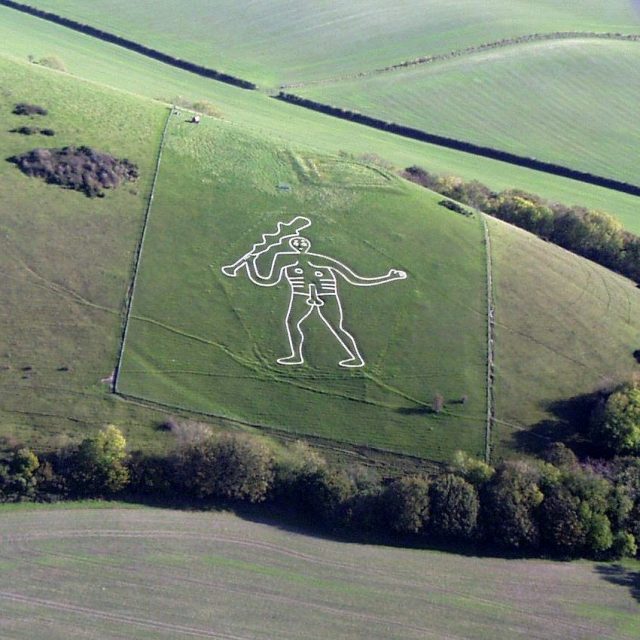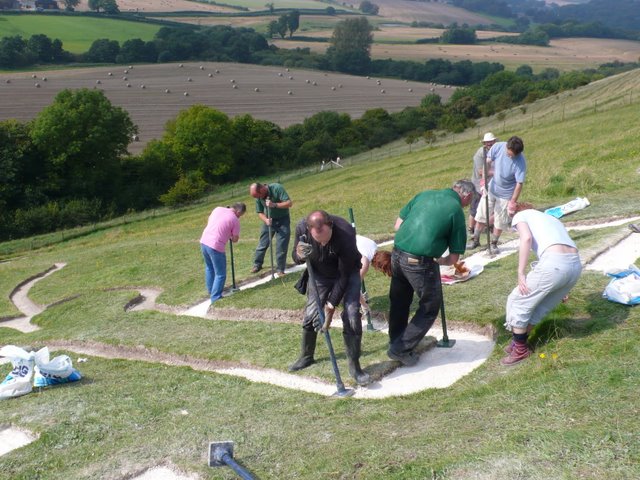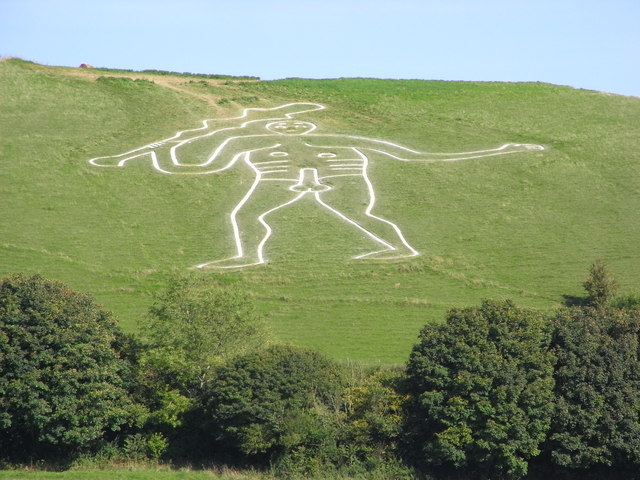The Cerne Abbas Giant in Dorset, England is much younger than originally thought. Could it be a medieval masterpiece rather than an ancient eyeful? A close encounter of the slimy kind may hold the answer. Long-abandoned snail shells prove that even the smallest details can change the course of history.
Described as a “microscopic species” by BBC News, they include “Cernuella virgata”, or the “Vineyard snail”. Evidence of them found in soil samples means the Giant is probably medieval, as the snails didn’t reach British shores till the 13th/14th centuries.
But how did they get there in the first place? Mike Allen, an environmental archaeologist in charge of the investigation, thinks the snails “arrived here accidentally, probably in straw and hay used as packing for goods from the continent”.

This eliminates the prehistoric and Roman eras. It could also indicate a later time period than medieval. Additionally, the shells reveal evidence that grass and vegetation grew over the Giant across the centuries.
The range of shelled specimens in the UK makes them a surprisingly good indicator for historical detectives. “There are 118 species of snails in Britain and many of them are habitat specific,” Allen told the National Trust in their press release from March. He adds: “their preserved shells can help us establish what a landscape was like at a certain time, and to track changes in land use over time.”

Allen is part of a major effort by the Trust to determine the age of the 180 ft chalk hill creation once and for all. The soil – collected from trenches dug by the Giant’s feet and elbows – is being analyzed, though final results aren’t expected till Christmas. A projected date of Autumn was announced earlier in the year but disrupted by Covid-19.
The Trust has owned the Giant since 1920, when it was donated to them by the Pitt-Rivers family. Their centenary project, involving the University of Gloucester, uses a technique called OSL (Optically Stimulated Luminescence). OSL identifies when mineral grains in the soil were last exposed to the sun’s rays.

Quoted by the Trust, senior archaeologist Martin Papworth says OSL “was used to discover the age of the Uffington White Horse in Oxfordshire in the 1990s, which was found to be nearly 3,000 years old – even more ancient than we had expected.”
Experts will soon gain a better idea of where the Giant hails from, though Papworth has stressed the outcome of “a date range, rather than a specific age”. In the meantime these medieval molluscs have generated serious archaeological buzz. Further funding is reportedly needed for the shells to be examined further.

Named after the village it lays near, the Cerne Abbas Giant was first recorded in 1694. Hewn into the chalk, the weapon-wielding wonder is world famous for its epic scale and staggering anatomy. Such is the prominence of a certain body part, it’s often thought of as a symbol of fertility. Amazingly, one of history’s most prudish periods is thought to have given rise to an enlarged phallus. Smithsonian Magazine writes about “a Victorian-era revision” which “merged the figure’s penis with its belly button.”
The National Trust outline the various theories which have sprung up over the years. These “range from ancient spirituality symbol and likeness of Greco-Roman hero Hercules to a caricature of Oliver Cromwell, with the club a reference to repressive rule and the phallus a mockery of his Puritanism.”
BBC News reports, “A further layer of mystery was revealed in the 1980s when a survey showed anomalies that suggested he originally wore a cloak and stood over a disembodied head.”
Related Article: The ancient and mysterious chalk white horses
The Dorset colossus can now be viewed from above in a virtual tour, thanks to laser mapping by drone. Last year a team gave the mysterious figure a chalk-based top up, restoring “him” to his former glory. And he certainly moves with the times – a mask was playfully added to the Giant’s face recently, reflecting the pandemic.
It’s quite the thing this Giant has lasted so long. Archaeologists may be no nearer to working out why he’s there. Yet Mother Nature’s slowest creatures have accelerated their understanding of how long the figure’s been in existence…
Steve is a writer and comedian from the UK. He’s a contributor to both The Vintage News and The Hollywood News and has created content for many other websites. His short fiction has been published by Obverse Books.
